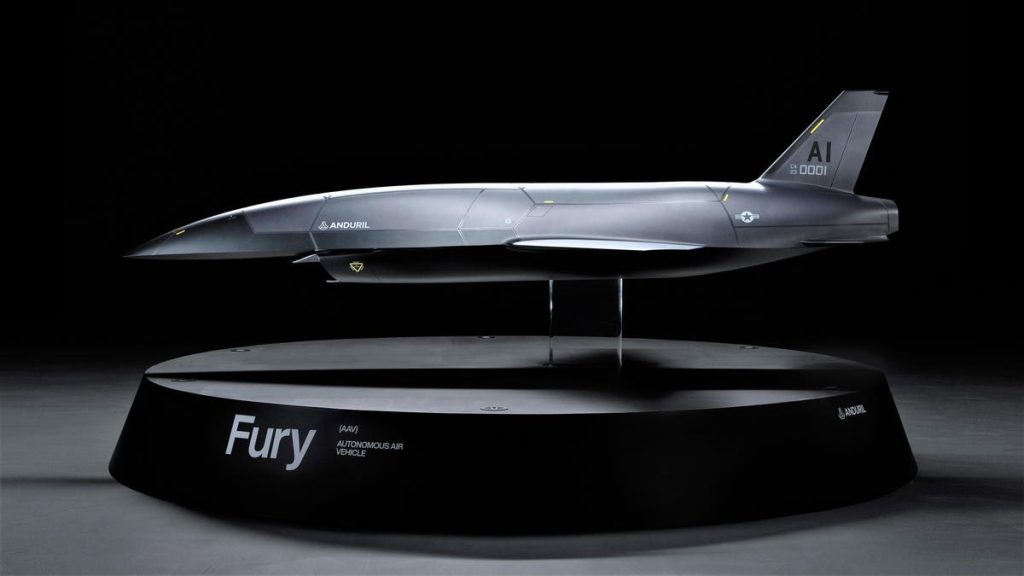Tech startup Anduril Industries has set out to challenge the traditional defense majors and break into the notoriously closed world of top-level defense contracting. Last year Anduril made headlines with a massive $1.5 billion Series E, now the company has announced the latest in a series of acquisitions: Blue Force Technologies, a developer of autonomous aircraft, including a next-gen drone fighter called Fury.
It is hard to overstate just how ambitious Anduril co-founder Palmer Luckey is in his stated goal of reaching the top tier in an industry long dominated by Lockheed Martin
LMT
NOC
BA
GD
Unlike the incumbents, Anduril essentially comes from the world of software and might be described as applied AI specialists. Earlier this year Anduril unveiled Lattice for Mission Autonomy, a hardware-agnostic software platform enabling diverse teams of robots to work together under human supervision , carrying out complex missions on air, sea and land.
Anduril’s vision of the future involves smart software controlling relatively low-cost hardware, rather than traditional ‘exquisite’ military platforms like the F-35. The war in Ukraine has shown the power of large numbers of low-cost drones,. The Pentagon is hurrying to get ‘attritable’ systems into the field under the Replicator program.
“To project force, deter aggression, and regain affordable mass, the DoD will need to rely on large quantities of smaller, lower-cost, more autonomous systems,” Anduril notes in a press release announcing the acquisition.
The new acquisition, Blue Force Technologies, designs and manufactures high-end composite aircraft and components in North Carolina. Of particular interest is the Fury, a jet-powered drone with the performance of a fighter. This is being developed with funding from the U.S. Air Force Research Laboratory’s Bandit program to create uncrewed adversaries for fighter pilot training.
“It is capable of pulling 9Gs at Mach 0.95 for a tiny fraction of the cost of similarly performant fighter craft,” says Luckey in a Tweet on the acquisition.
Rapid prototyping, digital engineering and an open architecture are intended to give Fury next-generation flight performance along with a high degree of flexibility so Fury can be configured different missions well beyond air-to-air combat.
This follows Anduril’s 2021 acquisition of drone makers Area-I which makes the small, tube-launched drones used in the U.S Army’s Air Launched Effects program giving helicopters the ability to find and strike targets far beyond the reach of existing weapons. The largest version, the Altius-700, weighs up to 65 pounds and had a flight endurance of five hours.
At the smaller end Anduril also produces the Anvil, an 11-pound high-speed quadcopter interceptor which takes out incoming drones by ramming them, and which can operate autonomously under the Lattice operating system.
By adding Blue Force Technologies to its portfolio, Anduril is extending into the largest class of drones. Fury is not yet flying, but ground tests of the propulsion system and flight testing of the software on a surrogate aircraft are under way. And things should speed up after the acquisition.
“Anduril is making significant investments to continue the development of the Fury autonomous air vehicle, expand manufacturing operations in North Carolina and accelerate development of technologies critical to future capabilities such as autonomous collaborative platforms,” according to the company press release.
Fury will join other new drones resembling scaled-down jet fighters, and which boast similar capabilities to their crewed cousins but at a fraction of the cost. The most notable of these is the X-58A Valkyrie from Kratos, which recently flew under the control of an AI pilot as part of another AFRL project. The Valkyrie is part of the Air Force’s Low-Cost Attritable Strike Demonstrator (LCASD) program, to prove that drones can take on missions which previously required human pilots.
The Valkyrie currently costs around $6.5 million, though Kratos have previously said that could drop below $2m per plane if it produced 100 a year. That means the Air Force could buy around 40 Valkyries for the price of a single F-35. Numbers like could radically change airpower in the coming decades. One crewed fighter with dozens of robot sidekicks looks far more capable than two crewed aircraft.
The other major contender in this field is Boeing’s MQ-28 Ghost Bat (also known as Loyal Wingman) being developed by Boeing Australia in collaboration with the Royal Australian Air Force. The MQ-28 is designed to work as a smart team with crewed aircraft to complement and extend their operations, carrying out surveillance reconnaissance and other missions.
Advanced AI under human direction will be vital to the success of these new drones. However good the hardware, unless it can react rapidly, reliably and intelligently to fast-changing situations, it will get shot out of the sky. Smart drones will be able to out-plan, out-think and out-fight the opposition as speeds too fast for human to follow.
If Anduril can build a better AI than their competitors and meld it with hardware like Fury they will be a force to be reckoned with. We may be seeing a seismic shift in the U.S. defense industry – not to mention the future of airpower.
Read the full article here










